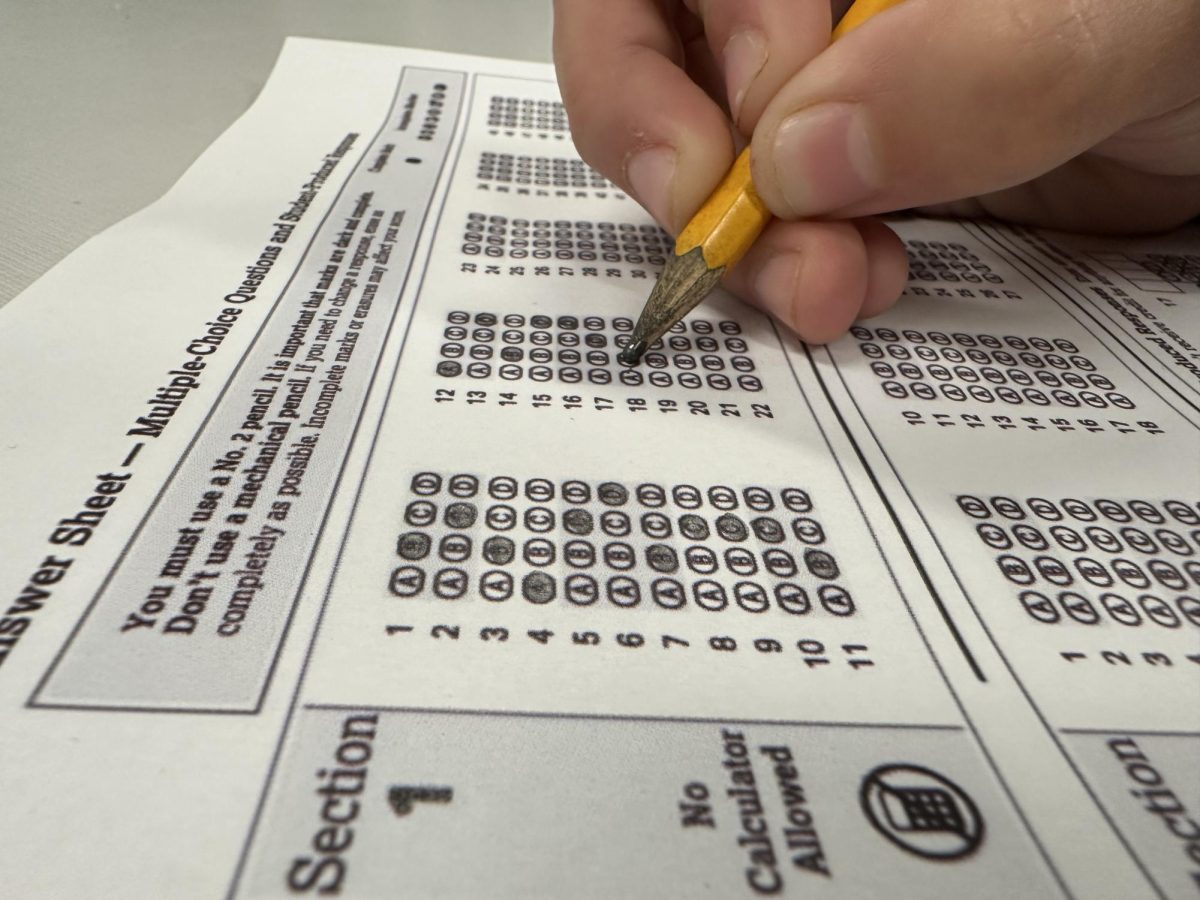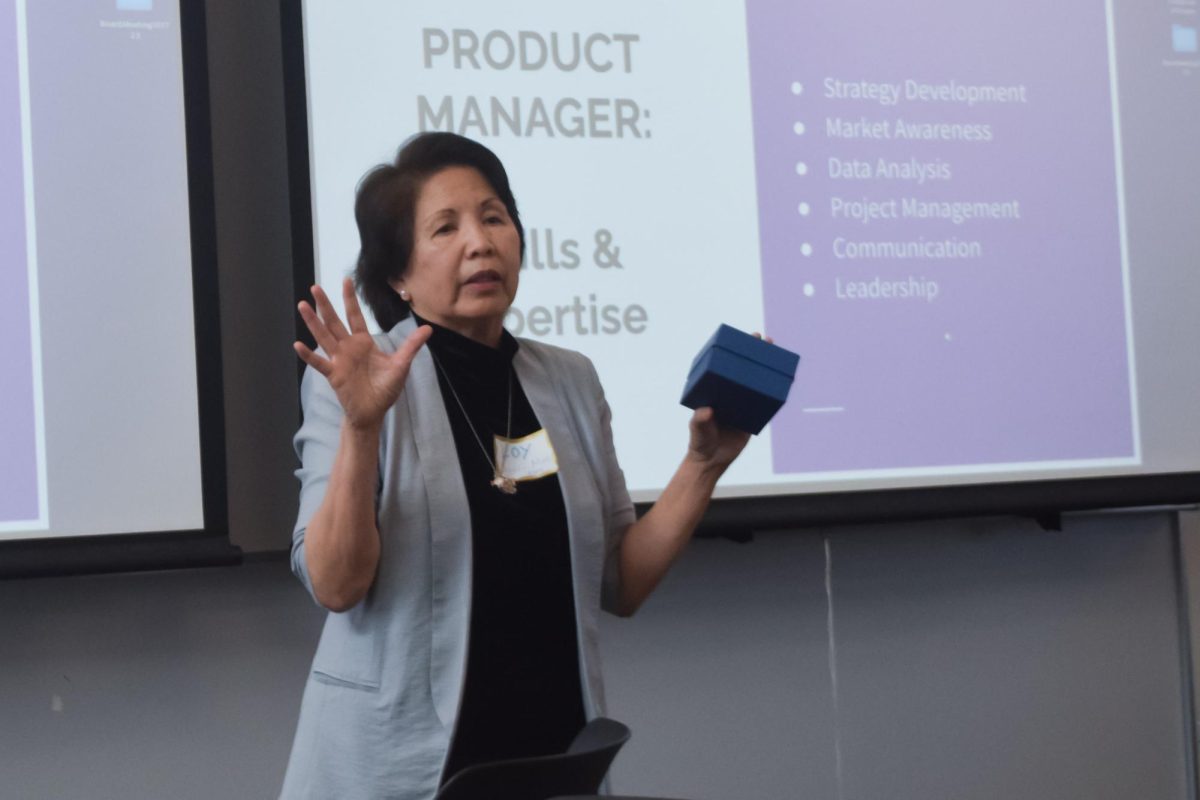The rain pounded against their umbrellas as they stood in the dark. Passionate. Determined. United. 300 people gathered together to fight for what they believed in — a Better Cupertino.
Despite the storm, on Dec. 2 of last year, seniors Jenny and Cheryl Wan’s father Wenhai Zheng led around 300 Cupertino residents to protest Vallco mall’s redevelopment at a mass rally in front of the City Hall.
“Sand Hill is a for-profit company, and it wants to make the greatest profit. In Cupertino, you make the greatest profit from selling residences,” political group Better Cupertino spokesperson Eric Schaefer said. “For a developer to sell housing, that’s a pretty quick return on their profit.”
Schaefer, however, believes that Vallco can potentially be saved and that redeveloping Vallco will alienate residents, causing the quality of schools to decline.
“Some friends have confided in me that they’re concerned and they have considered whether… they are going to move out,” Schaefer said. “One of the reasons that our schools perform really well on all these indexes is that we are an affluent community, so the families have the resources for all these aid… and I don’t know if this would change as a result [people moving out].”
These concerns have motivated over 300 residents to show their opposition at the Dec. 2 and Dec. 3 City Council meetings, and a Change.org petition to stop rezoning has around 1,500 signatures.
Better Cupertino’s spokesperson and Lawson Middle School parent Eric Schaefer, however, believes that the decline of Vallco’s mall may be due to mismanagement. In 2005, a group of Asian American investors bought Vallco. While owning the mall, however, they raised the rent, driving out multiple businesses. After going bankrupt in 2009, a Vietnamese real estate tycoon bought Vallco as a way to park his money in America but never visited the mall or focused on managing it. He bought it in the middle of the recession and planned to sell it at a higher price after the recession.
In Cupertino’s 2014 retail strategy report, Vallco’s JCPenney, Macy’s and Sears indicated no intention of moving out, and Macy’s reported that it would rather close its Sunnyvale Town Center location than its Vallco one because its Vallco location was much more profitable. Although Peter Pau, the founder of Sand Hill, promised to keep the Macy’s store open until March 2016, he will instead force the store to close this year in March. Sears will close this year, and JCPenney may also close this year.

According to Schaefer, Sand Hill is trying to close down the stores as a way to speed up the project.
“I think they probably have a vision they’d like to see. What if it came down to a standoff where [Sand Hill says], ‘Look, the mall is dead. By the way, we’re killing it, and your only option, city of Cupertino, is to revitalize it with the plan that we have,’” Schaefer said.
Additionally, Schaefer and another anonymous Lawson parent involved with Better Cupertino believe that Vallco can be saved, as long as Vallco introduces more appealing stores, such as bookstores and more restaurants. Due to the Apple Campus 2’s development, Schaefer believes that more customers will flow into Vallco.
“These other stores nearby are going to drive new customers to Vallco,” Schafer said. “When we think about what Vallco could be, we need to think about the options.”
The plan to redevelop Vallco is part of Cupertino’s General Plan, which aims to provide more housing in Cupertino. Better Cupertino and other residents, such as Zheng, would rather see the condos spread out than concentrated in two school zones, those of MVHS and Cupertino High School.
According to the City Council’s General Plan Amendment, the Vallco condos are meant to provide housing for Apple workers at Apple Campus 2. Schaefer and Zheng, however, believe that this will be unlikely.
“On one hand, it may be nice to live close to work, and if you have kids, you might be willing to pay the premium to live in a Cupertino school district area,” Schaefer said. “If you don’t have kids [however] … it doesn’t seem logical to pay that premium to live here if you could live a few miles away.”
From Vallco’s redevelopment, CHS may experience an increase of 389 students. Last year, MVHS’ student enrollment only increased by 30 students. Last year, CHS only experienced an increase of four students, and next year, FUHSD Communications Coordinator Sue Larson anticipates an increase of 20 students. MVHS’ enrollment will also increase by 511 students with the General Plan. Lawson Middle School would bear most of the additional enrollment at 800 more students if the General Plan is implemented.
“We will do the best that we can using the space available to our five schools,” Larson said. “In some cases, that means adding more classes. In other cases, that means adding new buildings.”
She does note, however, that new buildings can take up to five years to develop, and that the spike in enrollment from the condos will be unusual for both CHS and MVHS.
“Our schools won’t expand. Our libraries won’t expand. Our parks won’t expand,” Zheng said. “Our roads won’t expand, so when all these people move in, what will happen to Cupertino?”
Some residents, including Schafer, believe that Sand Hill may not a reliable partner. In 2007, Sand Hill partnered with RREEF Property Trust to redevelop the Sunnyvale Town Center, a mall that was struggling to attract shoppers as Vallco is now. The original plan was to build condos, as well as add new commercial space for retailers.
In 2009, however, the partners defaulted on their loans.
According to the City of Sunnyvale, Pau sued Wells Fargo multiple times, as a way to delay that project. In a 2012 press release, Sunnyvale accused Pau’s lawsuits as having “served little purpose other than to hold the project hostage,” and in May 2012, Santa Clara County
Zheng believes that the extra traffic from the condo residents and office employees, compounded with the traffic from the 14,000 Apple workers once Apple’s Campus 2 project is completed, will clog Homestead Rd. and Stevens Creek Blvd. Two million square feet of office space would house about 10,000 employees — about a tenth of Cupertino’s current population — and Cupertino’s Main Street project would add about another 400 employees. Altogether, these projects would add over a third of Cupertino’s current population to the traffic on Homestead Rd. and Stevens Creek Blvd. The map to the right visually summarizes these various construction projects.
Because Vallco is located in a tri-school area in close proximity to Collins Elementary School, LMS and CHS, an anonymous Lawson parent involved with Better Cupertino worries that the increased traffic will cause an increase in bike accidents. Her son, who is currently an LMS student, will have to bike across Stevens Creek Blvd. to reach CHS. Although Better Cupertino representatives have asked for the condos to be more spread out, City Council’s plans have concentrated the condos and other high-density housing in the MVHS and CHS school district areas.
More community input
Both Sand Hill and Better Cupertino believe that community input will be key to helping the City Council realize residents’ needs and vision for the future of Cupertino.
Zheng would like to see more acknowledgement from the City Council and the mayor of the residents’ opinions. The anonymous Lawson parent would like to see the City Council stop making empty promises. At the end of the Dec. 3 City Council meeting, the City Council told the protesters that it would discuss the issue of building heights at a later time, but it approved it anyway at the end of the meeting.
“Sometimes the City Council says that they won’t do something,” an anonymous Better Cupertino member said, “but they go ahead and approve it anyway.”
Schaefer believes that putting the issues — most importantly, the City Council’s plans to redevelop the City Hall and Cupertino Library — will be key. The consulting company that Cupertino hired to plan the city’s future and the General Plan Amendment, MIG, held community workshops, but around 140 people attended these workshops — people who attended more than one workshop were counted twice. Less than 300 people signed up for the updates on the workshops and meetings regarding the Vallco issue.
Schaefer, Zheng and the anonymous parent believe that Vallco could be saved if there was more time for community input to help managers revitalize the mall, and they do not see the benefits in rezoning the mall site. Furthermore, they do not support the 53 million dollars to build a new City Hall and Cupertino Library.
“The only thing I see is that this [Vallco] plan benefits the developer. The city [also] gets more property tax, but it needs to provide services to more people, so property tax is probably not enough to cover services for such a concentrated area of people,” the anonymous Lawson parent said.
Additionally, although the City Council has reached out to community members with workshops, Schaefer believes that a popular vote would be more effective. In 2006, residents in the political group CARe amassed a petition for a referendum that received over 10,000 signatures — 20 percent of Cupertino’s voters which was more than the 10 percent needed to pass. Despite the signatures, the developers and the city took legal action against the petition organizers before the referendum, Measures D and E, were passed.
“[The 2006 ballot initiative] was only because the citizens came together and said, ‘We don’t like what the developers are planning. We don’t like what the City Council is planning to do, so we’re going to have a referendum, a popular vote to tell the council that the community doesn’t like what’s going on,’” Schaefer said.
According to Schaefer, community workshops help but do not hold the same significance to City Council members as a referendum.
“I think there should be more community input,” Schaefer said. “What I think would be even better than [community workshops] would be a popular vote.”
Click here to read Sand Hill’s perspective on Vallco’s redevelopment.
Story written and reported by Sanjana Murthy and Elia Chen.






















